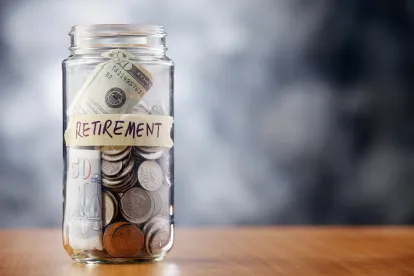On March 29, 2022, the House of Representatives passed the Securing a Strong Retirement Act of 2022 (SECURE 2.0, HR 2954). SECURE 2.0 is a comprehensive bill designed to increase access to retirement savings and includes a variety of provisions that would affect employer-provided retirement plans.
On June 14, 2022, the Senate Health, Education, Labor, and Pensions (HELP) Committee unanimously approved its version of SECURE 2.0, the Retirement Improvement and Savings Enhancement to Supplement Health Investments for the Nest Egg (RISE and SHINE, S. 4354) Act.
RISE and SHINE v. SECURE 2.0
The RISE and SHINE Act builds on SECURE 2.0, with some key differences. Provisions in the RISE and SHINE Act not in SECURE 2.0 include:
-
Allowing the use of plan assets to pay some incidental plan design expenses;
-
Raising the limit on mandatory cash-out distributions from $5,000 to $7,000; and
-
The inclusion of the Emergency Savings Act of 2022 (the Emergency Savings Act). Under Emergency Savings Act, 401(k) plans could include emergency savings accounts. Participants could make pre-tax contributions to their emergency savings accounts. Employers could match those contributions, but the total amount in a participant’s emergency savings account could not exceed $2,500. Participants could withdraw amounts from their emergency savings accounts generally at any time, without the requirements imposed on hardship withdrawals.
Provisions in SECURE 2.0 not in RISE and SHINE include:
-
Increasing the catch-up contribution limit;
-
Permitting matching contributions on student loan payments; and
-
Raising the required minimum distribution age.
WHAT’S NEXT?
The Senate Finance Committee anticipates releasing its retirement reform bill by July 4. The expectation is for the Finance Committee bill and the HELP Committee bill to merge into a final bill, which the Senate will vote on later this year. The Senate bill will then be reconciled with SECURE 2.0, and both chambers will vote on the combined bill.



 />i
/>i

